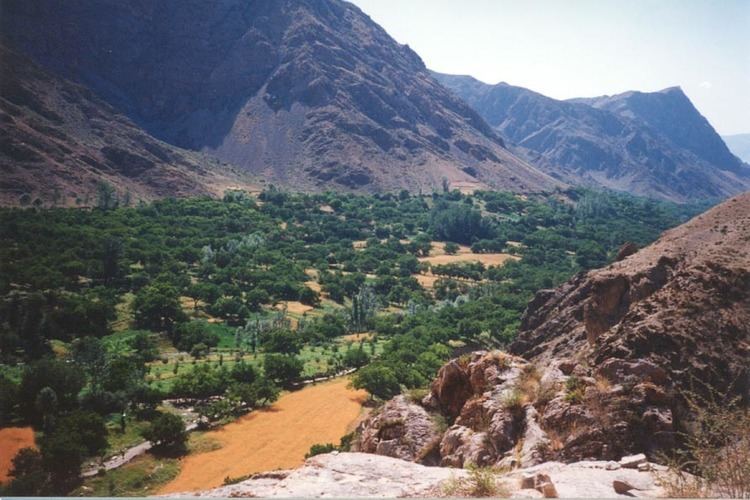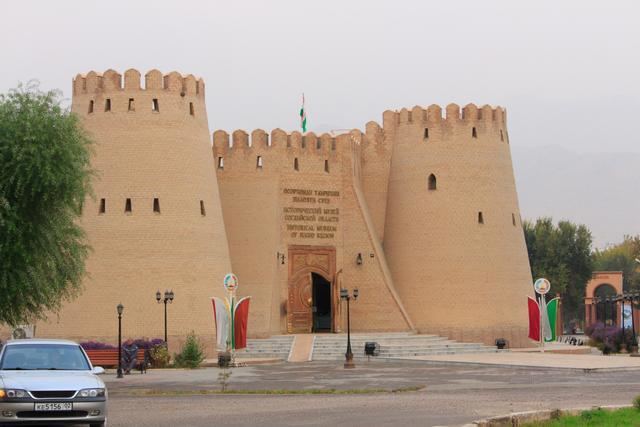Country Population 155,316 (2007) Area 40 km2 | ||
Colleges and Universities Khujand State University, Tajikistan State University of Law, Business, & Politics | ||
Khujand (Tajik: ??????, ????; Russian: Khudzhand), formerly Khodjend or Khodzhent until 1936 and Leninabad (Leninobod, ?????????, ?????????) until 1991, is the second-largest city of Tajikistan and the capital of the northernmost province of Tajikistan, now called Sughd.
Contents
- Map of Khujand
- Ict tpd khujand tajik
- History
- Tajikistan khojand food market central asia xujand panjshanbeh baazaar 2997 fps 169 kambiz mp4
- References
Map of Khujand
Khujand is one of the oldest cities in Central Asia, dating back about 2,500 years. It is situated on the Syr Darya River at the mouth of the Fergana Valley and was a major city along the ancient Silk Road.
The population of the city is 155,400 (2009 census), down from 160,000 in 1989.
Ict tpd khujand tajik
History

Khujand is the site of Cyropolis (??????????) which was established when king Cyrus the Great founded the city during his last expedition against the Saka tribe of Massagetae shortly before his death. Greek authors maintain that Alexander of Macedon later built a Macedonian settlement near Cyropolis in 329 BC and named it Alexandria Eschate (Greek: ??????????? ??????) or "Alexandria The Furthest". The city would form a bastion for the Greek settlers against the nomadic Scythian tribes who lived north of the Syr Darya River.

The city became a major staging point on the northern Silk Road. It also became a cultural hub and several famous Persian poets and scientists came from this city.
Khujand was captured by the Muslim armies in the early 8th century under Qutayba ibn Muslim, and incorporated into the Umayyad and later Abbasid Caliphates. In the late 9th century, however, it reverted to local rule and eventually incorporated into the Samanid Empire. It came under the rule of the Kara-Khanid Khanate in 999 but after division of Kara Khanids in 1042, it was initially part of Eastern Kara Khanids, and then later passed to the western one. Karakhitans conquered it in 1137, but it passed to Khwarazmshahs in 1211. In AD 1220, it strongly resisted the Mongol hordes and was thus laid to waste. Around 20,000 Mongol soldiers surrounded the city and besieged it but a local man opened the doors of the city and let the Mongol army in. In the 14th century, the city was part of the Chagatai Khanate until it was incorporated into the Timurid Dynasty in the late 14th century. The Shaybanid dynasty of Bukhara next annexed Khojand, until it was taken over by the Kokand Khanate in 1802, however Bukhara regained it in 1842 until it was lost a few decades later to the Russia.
In 1866, as most of Central Asia was occupied by Russian Empire, the city became part of the Russian Governorate of Turkestan. The threat of forced conscription during World War I led to protests in the city in July 1916, which turned violent when demonstrators attacked Russian soldiers.
In 1929, it was incorporated into the Soviet Republic of Tajikistan (Tajik Soviet Socialist Republic) after being part of the Uzbek Soviet Socialist Republic between 1924 and 1929. The city was renamed Leninabad on 10 January 1936 and it remained part of the Soviet Union until 1991.
With the independence of Tajikistan, Khujand became the second largest city in the nation.It reverted to its original name in 1992 after the breakup of the Soviet Union.
In 1996 the city experienced the Ashurov protests during which citizens called for the President, Emomali Rakhmonov to step down. The popular protests were followed by a protest from the citys prisoners, many of whom had been sentenced to long jail terms for minor crimes and who were living in poor conditions. The protest led to the Khujand prison riot in which between 24 and 150 prisoners were killed.
In the early 2000s many residents of Khujand had little to no access to water, and what water they did have was unsafe to drink and had to be boiled. In 2004, The Swiss State Secretariat for Economic Affairs and the European Bank of Reconstruction and Development joined to help improve the situation, providing 32,000 water meters for inhabitants and developing improved access to water. Residents pay for their water supply, which in turn helps Khujands municipal water company to continue to renovate and improve their services. The project is in its third stage of development, and should be completed by 2017. In comparison to other Central Asian projects aiming to improve access to water, this project is considered a success and has been applied to Kyrgyz cities and towns such as Osh, Jalal-Abad, Karabalta, and Talas, with a possible extension into the Kyrgyz capital of Bishkek.
